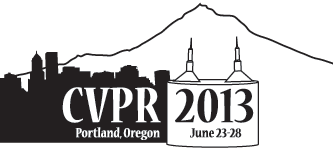-
A Theory of Refractive Photo-Light-Path Triangulation
Abstract3D reconstruction of transparent refractive objects like a plastic bottle is challenging: they lack appearance related visual cues and merely reflect and refract light from the surrounding environment. Amongst several approaches to reconstruct such objects, the seminal work of Light-Path triangulation [17] is highly popular because of its general applicability and analysis of minimal scenarios. A lightpath is defined as the piece-wise linear path taken by a ray of light as it passes from source, through the object and into the camera. Transparent refractive objects not only affect the geometric configuration of light-paths but also their radiometric properties. In this paper, we describe a method that combines both geometric and radiometric information to do reconstruction. We show two major consequences of the addition of radiometric cues to the light-path setup. Firstly, we extend the case of scenarios in which reconstruction is plausible while reducing the minimal requirements for a unique reconstruction. This happens as a consequence of the fact that radiometric cues add an additional known variable to the already existing system of equations. Secondly, we present a simple algorithm for reconstruction, owing to the nature of the radiometric cue. We present several synthetic experiments to validate our theories, and show high quality reconstructions in challenging scenarios.
Related Material
[pdf][bibtex]@InProceedings{Chari_2013_CVPR,
author = {Chari, Visesh and Sturm, Peter},
title = {A Theory of Refractive Photo-Light-Path Triangulation},
booktitle = {Proceedings of the IEEE Conference on Computer Vision and Pattern Recognition (CVPR)},
month = {June},
year = {2013}
}
These CVPR 2013 papers are the Open Access versions, provided by the Computer Vision Foundation.
Except for the watermark, they are identical to the accepted versions; the final published version of the proceedings is available on IEEE Xplore.
Except for the watermark, they are identical to the accepted versions; the final published version of the proceedings is available on IEEE Xplore.
This material is presented to ensure timely dissemination of scholarly and technical work.
Copyright and all rights therein are retained by authors or by other copyright holders.
All persons copying this information are expected to adhere to the terms and constraints invoked by each author's copyright.

